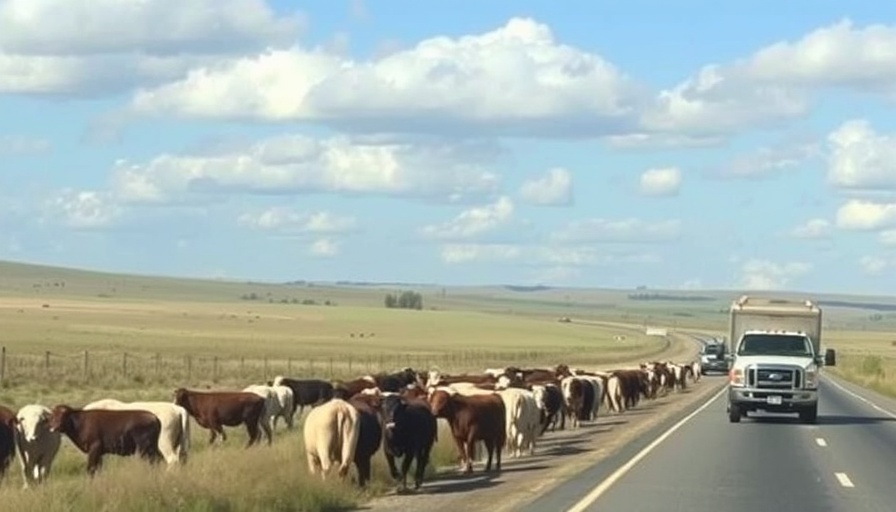
Crash Details: What Happened on U.S. Highway 287?
A cattle hauler's journey took a disastrous turn on September 18, 2025, when a blowout led the tractor pulling a livestock trailer to veer off an embankment on U.S. Highway 287 in Waxahachie, Texas. The truck crashed into a retaining wall, leaving the driver hospitalized but stable, and raising concerns over the welfare of the 52 head of cattle onboard, including 20 bulls and 32 calves. A temporary corral was constructed by first responders to ensure the safe transfer of the cattle to a new trailer, while a veterinarian was dispatched to assess any injuries among the animals.
Immediate Aftermath: The Notable Community Response
The immediate response to the crash showcased the community's resilience. Emergency teams quickly addressed the situation, with a hazmat team working to clean up a fuel spill from the damaged trailer. The intersection at 77/287 required closing, but officials maintained that traffic on 287 remained unaffected. This proactive approach highlights how local agencies can effectively respond to emergencies, emphasizing the importance of community preparedness in mitigating disasters.
Animal Welfare at the Forefront of Response Efforts
As the situation unfolded, the welfare of the animals involved was a primary concern. The veterinarian’s presence ensured that the cattle received immediate care, highlighting the ethical responsibilities that come into play in such incidents. While it remains unclear how many cattle were killed or injured during the crash, the swift actions taken mirror the growing awareness and sensitivity toward animal welfare within the industry. Such measures underscore a vital perspective: technology and innovation in transport should not overshadow the humane treatment of livestock.
Long-Term Challenges: Lessons for Livestock Transport Safety
This incident has revived discussions around livestock transport safety regulations and practices. With pressures on the livestock transportation industry to increase efficiency, questions arise regarding what can be done to enhance safety measures for both drivers and animals. The industry could benefit from new technologies that monitor the conditions of trailers and the state of the drivers, potentially preventing such accidents from occurring in the future.
Emerging Technological Solutions for Transport Safety
In light of the incident, it is important to explore technological advancements that could mitigate such risks. Innovations in truck design, GPS tracking systems for livestock trailers, and real-time monitoring solutions are crucial. These tools not only help in ensuring the safety of the cargo but could also prompt a review of regulations to mandate advanced safety features in livestock transport vehicles. Such inventions could revolutionize the industry and significantly reduce the likelihood of similar accidents.
Community Impact and Reflection on Local Infrastructure
The incident has served as a stark reminder of the intersection between transportation, commerce, and community safety. Infrastructure improvements, including well-maintained highways and efficient emergency response systems, are necessary to support the growing number of transport vehicles on the road. Enhancing these systems will not only benefit livestock transport but also overall traffic safety in Waxahachie and beyond.
Future Perspectives: The Road Ahead for Livestock Transport
Looking forward, it is clear that the livestock transport industry must evolve in response to both technological advancements and community needs. There is a growing narrative around integrating ethical considerations within operational procedures, solidifying a commitment to animal care while also addressing economic practicality. Stakeholders, from farmers to transport providers, must engage in conversations about best practices and innovations that prioritize animal welfare amid logistical challenges.
The recent incident in Waxahachie stands not only as a cautionary tale about the dangers of livestock transport but as a rallying call for change. By examining our response and preparing for the future, we can work towards a safer, more responsible transport system that meets the needs of all involved.
As this legislation and conversation progresses, it is essential that individuals advocate for enhanced safety practices and engage with local authorities. Join the conversation to ensure the welfare of our livestock on the road is prioritized!
 Add Row
Add Row  Add
Add 




Write A Comment